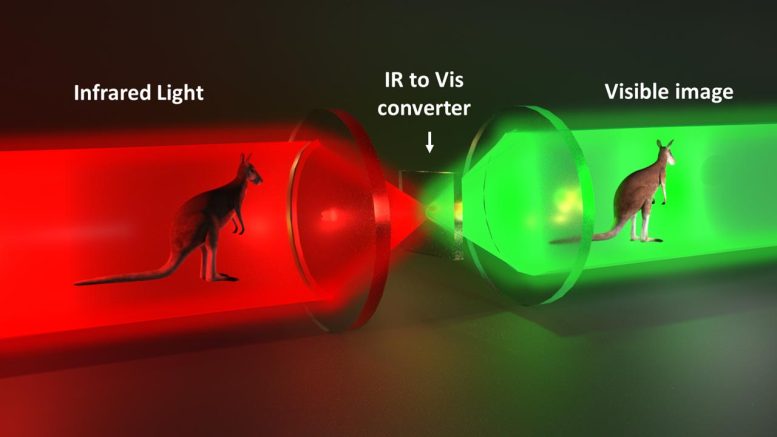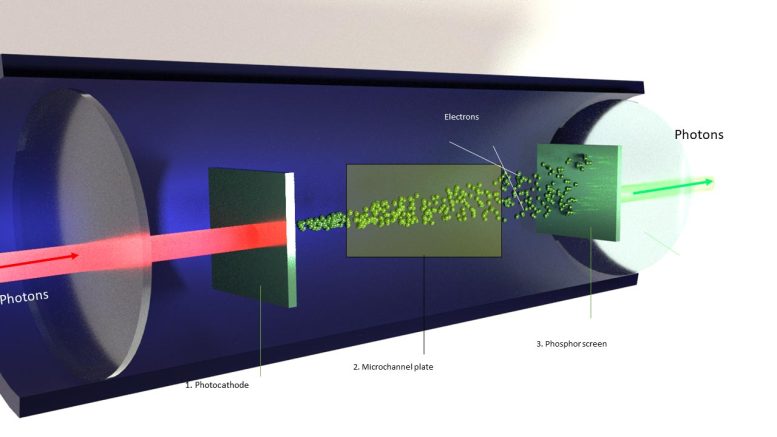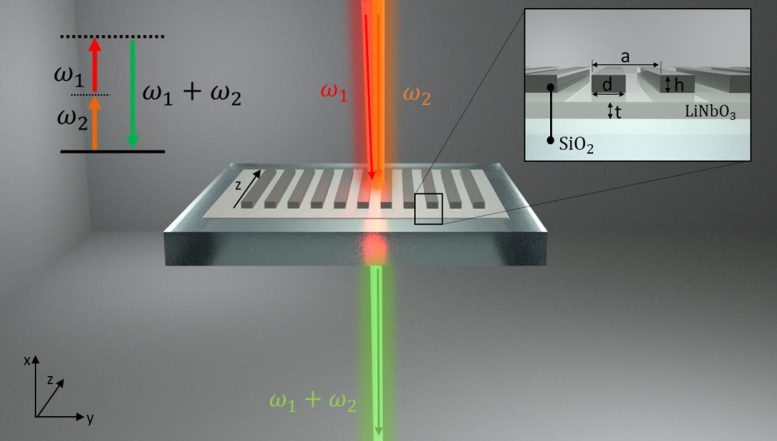
TMOS researchers have created a lightweight infrared filter for eyewear that enables vision in both infrared and visible light, enhancing night-time safety and convenience. Credit: SciTechDaily.com
Researchers have developed a groundbreaking thin infrared filter for night vision that can be integrated into everyday eyewear, allowing simultaneous viewing of the infrared and visible light spectra. This innovation promises to transform night vision technology by making it lighter and more practical for everyday use, potentially improving safety in low-light conditions.
Scientists from TMOS, the ARC Centre of Excellence for Transformative Meta-Optical Systems, have made significant progress in their journey to deliver a new approach to night vision technology, creating an infrared filter that is thinner than a piece of cling wrap, and that could one day be placed on everyday eyewear, allowing the user to view the infrared and visible light spectrum at the same time.
Night vision devices have primarily been used by the military, hunting enthusiasts willing to lug around multipurpose binoculars, or photographers happy to carry around heavy lenses. This is due to the weight and bulk of the technology. The average person is not going for a night-time run with an additional kilo strapped to their forehead.

Artist impression of non-linear infrared upconversion technology. Credit: Laura Valencia Molina, Australian National University
Advancing Everyday Night Vision
Miniaturizing night vision could lead to widespread adoption. Creating night vision filters that weigh less than a gram and can sit as a film across a pair of traditional spectacles opens up new, everyday applications. Consumer night vision glasses that allow the user to see the visible and infrared spectrum at the same time could result in safer driving in the dark, safer nighttime walks, and less hassle working in low-light conditions that currently require bulky and often uncomfortable headlamps.
In research published in Advanced Materials, TMOS researchers from the 
Figure 1.1. Diagram of traditional night vision set up. Credit: Laura Valencia Molina, Australian National University
Streamlining the Night Vision Process
Traditional night vision technology requires infrared photons to pass through a lens, then encounter a photocathode that transforms these photons into electrons, which then go through a microchannel plate to increase the number of electrons generated. These electrons which travel through a phosphor screen to be reconverted back to photons, producing an intensified visible image that can be seen by eye (figure 1.1). These elements require cryogenic cooling to prevent thermal noise from also being intensified. A high-quality night vision system, like the one described above, is heavy and bulky. In addition, these systems often block the visible light.
The metasurface-based upconversion technology requires fewer elements, drastically reducing its footprint. Photons pass through a single resonant metasurface where they are mixed with a pump beam (figure 1.2). The resonant metasurface enhances the energy of the photons, drawing them into the visible light spectrum—no conversion of electrons needed. It also works at room temperature, eliminating the need for bulky and heavy cooling systems.

Figure 1.2 Diagram of metasurface-based infrared upconversion set up. Credit: Laura Valencia Molina, Australian National University
Enhancements in Imaging Technology
In addition, traditional infrared and visible imaging systems cannot produce identical images, as they capture images from each spectrum side-by-side. By using up-conversion technology, imaging systems can capture both the visible and non-visible in one image. The work is an improvement on the researchers’ original technology, which featured a gallium arsenide metasurface. Their new metasurface is made from lithium niobate, which is fully transparent in the visible range, making it far more efficient. In addition, the SciTechDaily